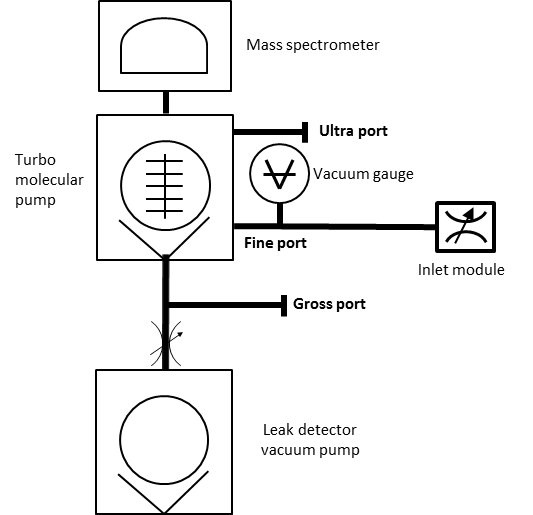Test method using helium gas
How to select helium test method
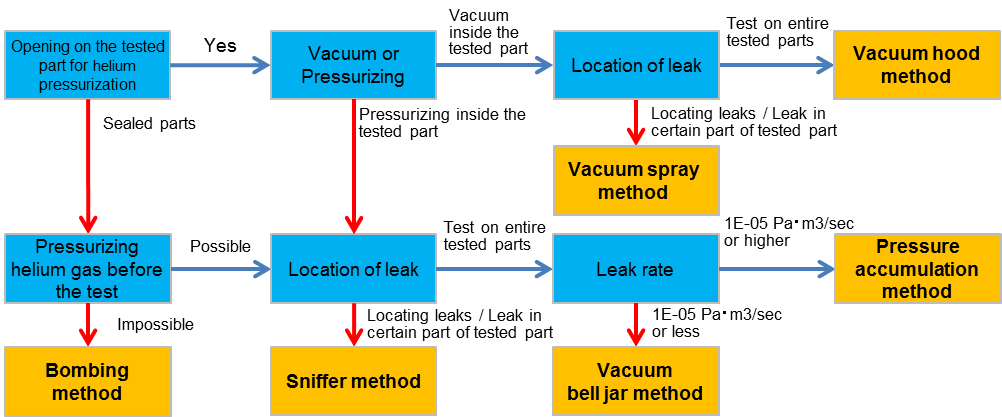
Feature of each test methods
Helium gas mixer and helium gas recycle machine are available to reduce the running cost.
Please ask your nearest Cosmo office, if you are interested. We will provide the best solution, depending on the initial cost and running cost.
Vacuum method
Vacuum Spray method
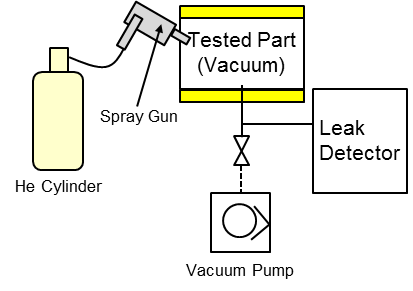
Inside of the tested part is vacuum-evacuated and helium gas is sprayed from outside of the tested part by a spray gun.
Helium that leaks into the tested part is detected.
Vacuum Hood method
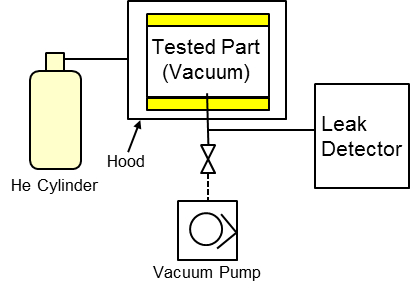
Inside of the tested part which is covered by a hood is vacuum-evacuated.
Inside of the hood is pressurized with helium, and helium leaks into the tested part is detected.
Pressurization method
Sniffer method
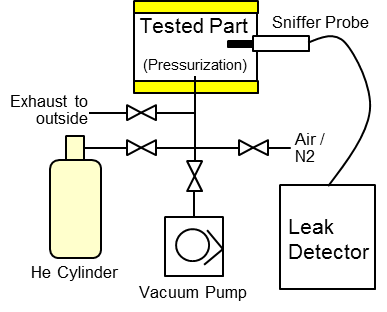
Inside of the tested part is vacuum-evacuated and pressurized with helium.
Helium that leaks to the outside of the tested part is detected by the sniffer probem.
Vacuum bell jar method
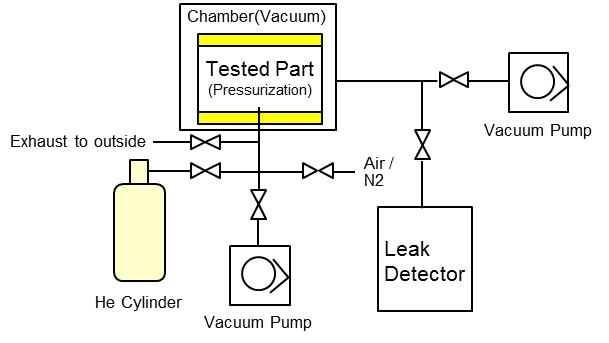
Tested part is placed in a chamber. Inside of the tested part is vacuum-evacuated and then pressurized with helium.
Inside of the chamber is also vacuum-evacuated and helium that leaks into the chamber is detected.
Pressure Accumulation method
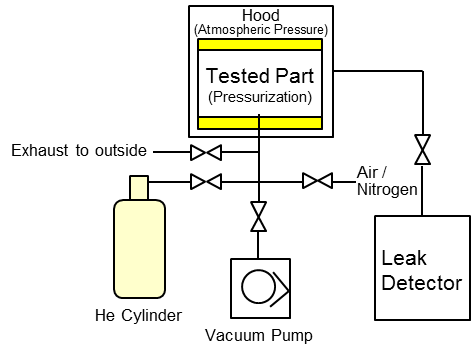
Tested part is placed in a hood and inside of the tested part is vacuum-evacuated.
Then, the inside of it is pressurized with helium.
The helium that leaks into the hood is accumulated for a certain period to detect the helium (concentration)
Bombing method
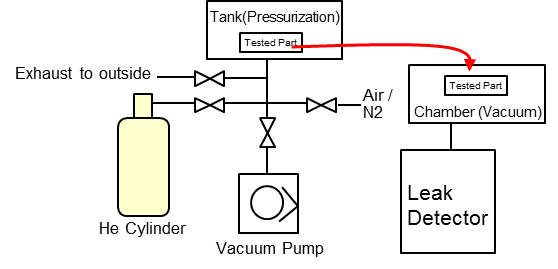
Tested part is placed in a bombing tank which is vacuum-evacuated for a certain period.
Tested part is bombed with helium for a certain period and then removed from the tank and placed in the chamber which is vacuum-evacuated.
Helium that leaks into the chamber from the tested part is detected.
Circuit Configuration of Pressure Accumulation Method
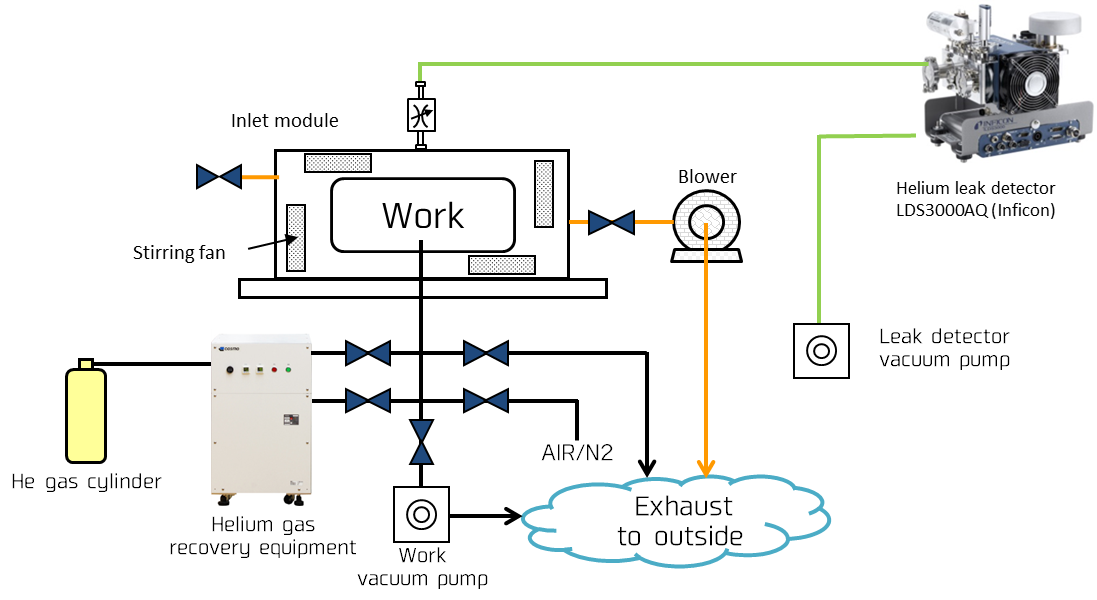
Helium Detector LDS3000AQ Circuit Configuration
Principle of Helium Detection
180° Magnetic deflection mass spectrometer
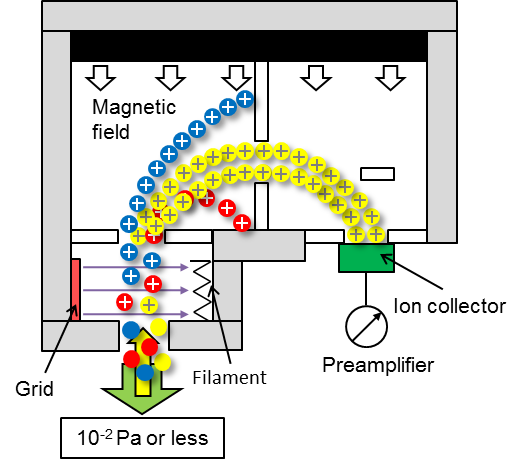
- The helium entering the LDS3000AQ reaches the mass spectrometer by the back-diffusion phenomenon by the turbo-molecular pump.
- The molecules that have reached the mass spectrometer are converted into positive (+) ions by the electrons of the filament and move in one direction by the acceleration voltage.
- The positive (+) ions separate into their orbits according to the mass of the gas (helium) when the positive (+) ions pass through the electric field.
- Only the positive (+) ions of helium reach the ion collector and are converted into voltage signal and amplified for helium measurement.
Circuit Configuration of Vacuum Bell Jar Method
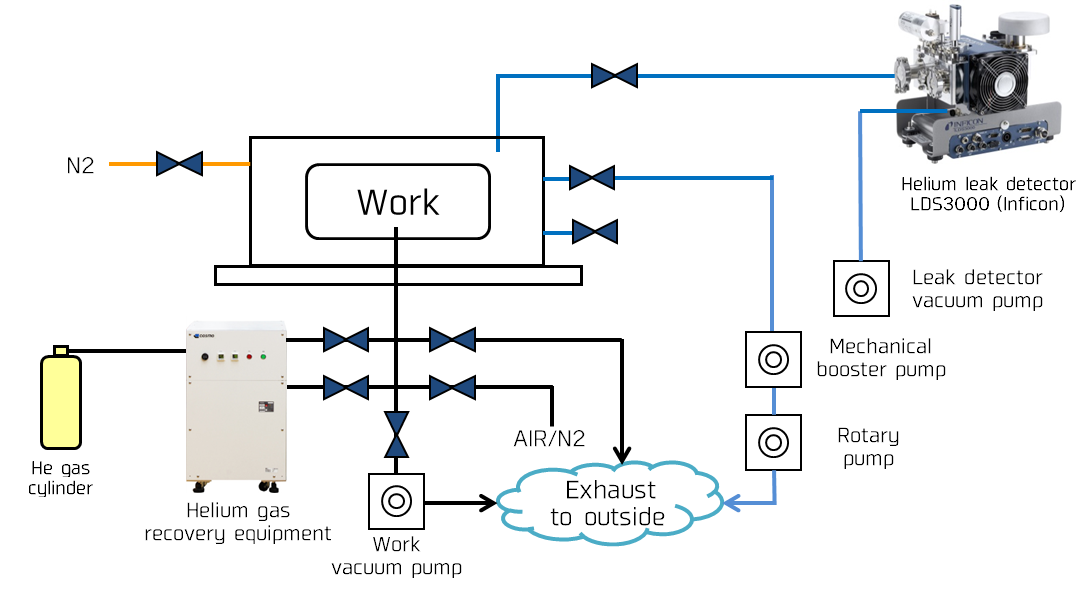
Helium Detector LDS3000 Circuit Configuration
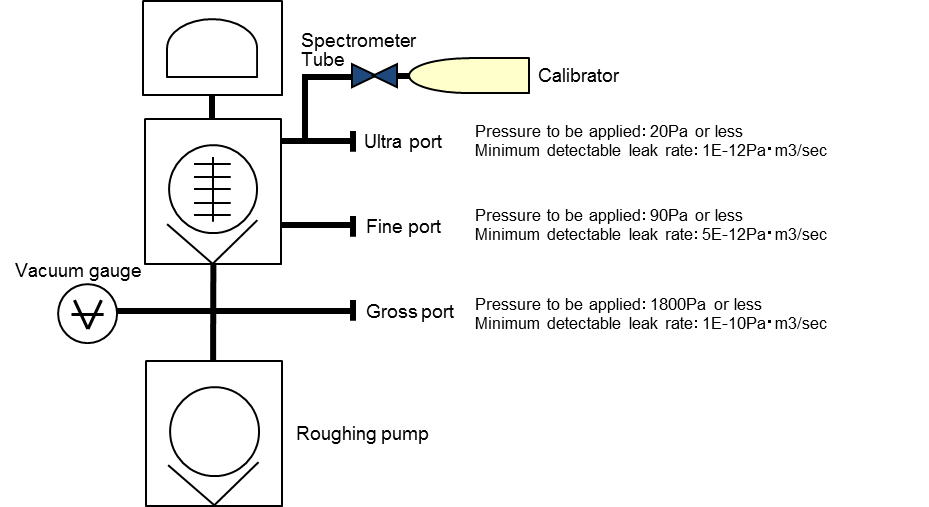
Leak detector with valves to automatically select a port according to the pressure to be applied are available.
Feel free to contact Cosmo for more detailed information.
Principle of Helium Detection
180° Magnetic deflection mass spectrometer

- The helium entering the LDS3000 reaches the mass spectrometer by the back-diffusion phenomenon by the turbo-molecular pump.
- The molecules that have reached the mass spectrometer are converted into positive (+) ions by the electrons of the filament and move in one direction by the acceleration voltage.
- The positive (+) ions separate into their orbits according to the mass of the gas (helium) when the positive (+) ions pass through the electric field.
- Only the positive (+) ions of helium reach the ion collector and are converted into voltage signal and amplified for helium measurement.






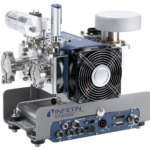 LDS3000
LDS3000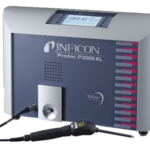 P3000(XL)
P3000(XL)






